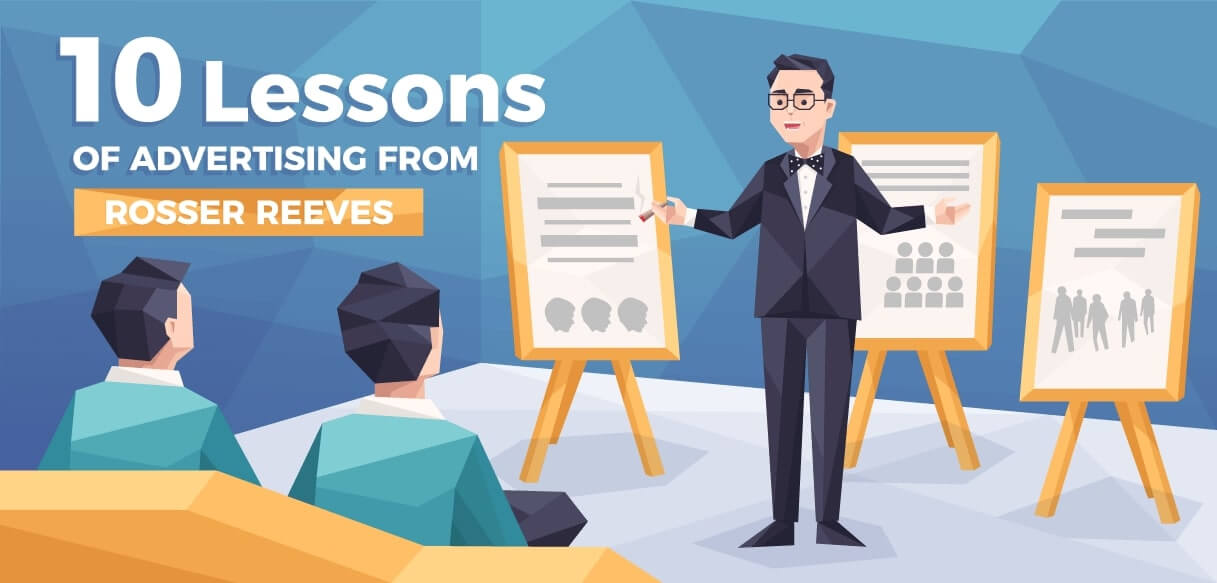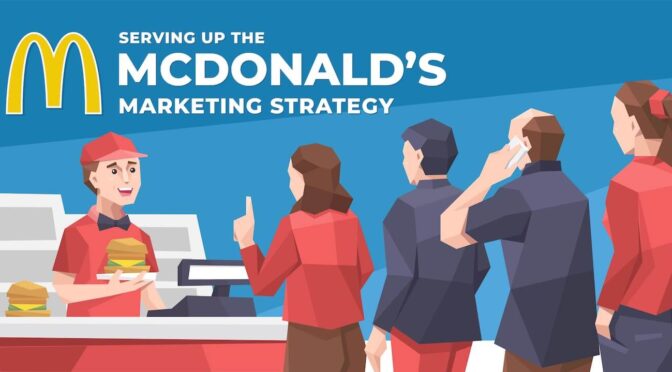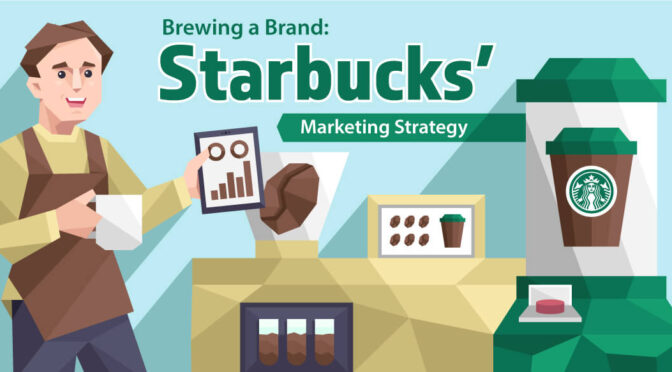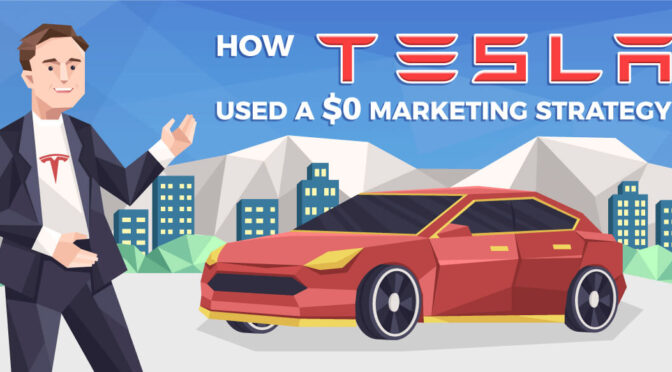I’d never heard of Rosser Reeves until a few months ago. Now I wish I’d heard of him 30 years ago.
Quick Bio: Rosser Reeves, former Chairman of Ted Bates & Co., is a TV advertising legend whose work would be instantly recognizable by Baby Boomers, e.g. M&M’s “melts in your mouth, not in your hands”. He was enormously successful – so much so that Jon Hamm’s character on Mad Men, Don Draper, is in part based on Reeves.
I came across Reeves’ while researching the origin of value propositions – a term popularized by Harvard Business School pundits like Michael Porter. Turns out that Reeves was a pioneer of this concept as well, having invented the Unique Selling Proposition in the early 1940s. Reeves’ work is so well-regarded by the likes of Al Ries, Jack Trout and Seth Godin that I had to get my hands on Reeves’ classic book, Reality in Advertising, published in 1960.
It’s out of print, so only available second-hand through rare book sellers. Thanks to Abe Books I found one in good condition at Bank of Books in Ventura, CA.
Rosser Reeves is to advertising what Benjamin Graham is to value investing. He’s a writer who cuts to the chase and knows how to take a wealth of experience and insight and condense it into succinct powerful lessons. For any of us who have spent our lives in sales and marketing, his are the kind of teachings you wish you knew when you started out.
His advice and the principles he describes are just as fresh and relevant today as they were 50 years ago. In fact, I’d say the Reality in Advertising is a must-read for every budding social marketer (and a few pros who haven’t quite figured out the plot in my view).
I’d be selfish not to share (who’s got the patience to find an out-of-print copy). So here you go – 10 lessons on advertising from a master, covered in the next 4 blogs.
Lesson 1: Advertising cannot by judged by sales alone
It wasn’t Reeves’ creativity that made him successful. It was his mastery of measurement and data. Most marketers are familiar with this lament from Reality in Advertising, “I know that at least half of my advertising money is being wasted. My problem is – I do not know which half.”
He knew that most marketers often incorrectly attributed a rise – or fall – of sales to a campaign. And, he had the data to prove it. He used a very simple formula to measure advertising effectiveness:
Penetration = % people who recall a campaign (brand, slogan, etc)
Usage Pull = [% customers who recall a campaign] – [% customers who don’t]
Not rocket science so far, is it? But consider that Reeves’ firm amassed the data for several $B of advertising (big then – today it’s $500B annually) by America’s top firms. It was the largest study of its kind every done at the time. And it tells an immensely powerful story – just using two simple bar charts.
The first, a frequency distribution bar chart, shows the penetration for 78 of America’s largest advertisers – coincidentally starting with the highest penetration (78%) and descending rather uniformly to the lowest penetration (1%). Uniform, yes, but there are surprises.
- One bar represents a company that spent a hefty amount to score 5% penetration in a year. Its biggest competitor spent less, and in less time, to garner 60% penetration – 12X more awareness.
- Two companies spending an identical amount in advertising score penetration of 44% of America vs. 1.8%
- An advertiser chose to use a gimmick which was remembered by 38% of the market … but only 9% could recall the message.
The second bar chart shows usage pull. It, too, shows 78 bars – but this time some rise above the horizontal line (a story that works because it pulls new customers) while other bars fall below the line (showing net customer loss). About half the 78 companies show positive usage pull, and half show negative … irrespective of the penetration.
- An advertiser with a pull rate of 20% changed its campaign (story) and its pull dropped by half to 10%. But as sales were increasing, the company did not have a clue that its advertising was now only half as effective.
- One advertiser’s value proposition (its story … the crown jewels) is neatly tucked away in a corner of its advertising, largely unnoticed by most readers. But those who do register it have a pull rate of 18%.
- A brewery spends $100m (today’s dollars) running highly memorable imagery that scores high on penetration but, digging deeper, actually is recalled by those who drink less of its beer! And the company is none the wiser.
But, Reeves offers hope. Those companies that do the measurement and apply the principles show advertising performance 34% higher than the average performance for all advertisers. That’s like getting the punch of $4m advertising for only $3m.
Lesson 2: The ideal life expectancy of a good campaign is forever
Here’s an experiment that Reeves’ firm conducted for a major brand 50 years ago. The finding may surprise you – it certainly surprised me. But it’s just as applicable today to a marketing campaign as it was then.
Objective: Determine how long people remember an ad campaign (keep it in their heads).
The experiment: Reeves’ company sampled a statistically valid proportion of the U.S.population and measured the penetration (unaided recall) for a major brand ad campaign. It tested out at 50% – which meant that 50% of the U.S. population sample knew it, and 50% didn’t. Six months later, with the same campaign (and same $ spend) still running, Reeves tested the identical group of people to see what had changed.
Here’s the astonishing finding: Overall penetration had not changed a bit. It stood at 50%. But, half of the people who remembered the campaign 6 months earlier had now forgotten it, and half of that original group who had not initially recognized the campaign now knew it! Penetration didn’t change a bit – but the composition of people had changed dramatically. This was no fluke. Reeves found that this repeatedly held true for other campaigns conducted by other companies.
This was a big surprise. Previous wisdom – once remembered, not forgotten – was proved wrong. And, importantly, just because a campaign does not register with someone the first time, it doesn’t mean it won’t the second time. The implication was clear: companies need to deliver and reinforce the same message, repeatedly, for as long as they can.
However, Reeves observed something else, too. Most companies and their executives change campaigns after a year even if the penetration is high. In other words, if penetration shoots up but sales do not, most executives do not have the patience to stay the course.
These learnings led to three principles which, by all accounts, hold true today.
- When building or maintaining penetration, changing a story (the campaign theme) has the same effect as turning off the ad spending.
- If you run only brilliant campaigns, but change them often, a competitor who sticks to a good campaign will often pass you.
- Unless the product becomes uncompetitive, a great campaign will not wear itself out.
Lesson 3: The average buyer will only remember one strong claim or concept.
Today we call it information overload. But buyers have been suffering from it for decades. In their landmark 1981 book, Positioning: the battle for your mind, Jack Trout and Al Ries coined the term tyranny of choice to refer to the overwhelming number of product choices and flood of promotion faced by the average buyer. This implies that companies must not only compete with their direct competitors but for buyer mindshare amid all the noise of print, radio, TV, web and social media. People can and will remember only so much. We’ve conditioned ourselves to tune out everything else. And we’re darn good at it.
Reeves observed similar things and tested it out with further experiments. These, in turn, led to two interesting and related discoveries on the whole matter of buyer mindshare:
- As your penetration goes up, your competitors’ penetration will go down, i.e. there is a finite amount that the average buyer will remember about all competitors in a product category. I.E. if you increase your penetration from 25% to 50%, the aggregate penetration for all your competitors will, when tested, decrease from 75% to 50%
- But, what happens in one product category does not affect the buyer’s recall in other product categories.
The implications are twofold:
- Great campaigns fuse all of the product components into one memorable message.
- Increasing your own penetration also decreases the penetration of your competitors.
Lesson 4: Ultimate Selling Propositions are the levers that pull demand
In the 1950′s Reeves developed what we know today as the value proposition. His firm’s experience showed that flash and dash (Reeves called this “show-window” advertising) could sell advertising contracts to clients, but sustainable value propositions were what moved the needle on generating demand and, ultimately, sales. His firm backed this up (bear in mind they were a leader in their day) with a mound of evidence.
Reeves defined USPs precisely, as having three ingredients:
- A customer proposition that confers a specific benefit to the buyer.
- The proposition must be unique, i.e. competitors cannot or do not offer or mention it.
- It must be compelling enough to pull customers, i.e. materially drive up penetration.
His firm’s well-executed research showed that claims of usage (#1 seller) and preference (cosmetics used by the stars) were significantly more effective when the campaign revealed why. This is what USPs are about.
A USP is not what you put into promotion, but what the buyer takes out of your promotion.
Reeves observed that finding truly compelling and unique differentiators as the basis for USPs was difficult. Over time, competitors catch up. Just like they are doing with the iPhone and the iPad. The data showed that there are three strategies that can be pursued to get ahead of the competition:
- Find a relevant and compelling USP
- Improve the product
- If the product cannot be improved, preempt the competition with an attribute that is unique to the product (or firm) and deemed compelling by the competition
The third strategy is especially intriguing – a topic for an entire blog in its own right.
Lesson 5: The Deceptive Differential
Ever sit in one of those ‘creative sessions’ where someone writes every single positive attribute and competitive differentiator of a product on the whiteboard? Then this lesson is for you.
Reeves observed that marketers who trump up trivial, picayune and questionable product attributes pay the price in the long term. Misleading and trumped up claims prove to be a road to ruin. A research colleague saw this time and time again in the data, leading him to conclude two principles:
- Advertising pushes sales of good products up, and bad ones down. Promoting unsubstantiated claims reinforces their absence in the minds of buyers.
- Corollary: promoting minuscule differences which buyers cannot observe ends up over time killing the product.
 This principle extends into all forms of marketing, and not just advertising. Any B2B marketer who has chosen to focus on minutiae and accentuate the positive – be it in collateral, on the web, or in field briefing documents – has very likely incurred the wrath of the sales force once they get burned in the marketplace. There are seldom second chances!
This principle extends into all forms of marketing, and not just advertising. Any B2B marketer who has chosen to focus on minutiae and accentuate the positive – be it in collateral, on the web, or in field briefing documents – has very likely incurred the wrath of the sales force once they get burned in the marketplace. There are seldom second chances!
Lesson 6: Product Comparisons
Build a better mousetrap and the world will beat a path to your door – Ralph Waldo Emerson. Not if they don’t know about it!
Direct competitive comparison is often the most practical way to demonstrate product superiority. But it is the slipperiest of slopes in marketing. For starters, it’s illegal in much of Europe, e.g. Germany. And it can lead to litigation and counter-advertising (e.g. AT&T and Verizon) making the cost of the tactic significant. Reeves found competitive advertising ultimately highly effective provided that two conditions are observed:
- Comparative differences must be significant (see Deceptive Differential above), important and truthful – borne out by facts, not merely opinion.
- The comparative brand must be a recognized contender – you can’t kick sand in the face of the little guy.
Lesson 7: Brand Image campaigns, on their own, are risky
Reeves is cautious regarding branding. I wasn’t sure I agreed with his POV at first until I finished reading everything he had to say on the matter.
He was certainly not big on fads like subliminal advertising – and the simple reason that results in one test could not be duplicated in further tests. The notion of scientific method, research and painstaking analysis is a cornerstone of Reeves’ belief in how marketers should conduct their affairs.
It is due to this philosophical viewpoint that Reeves seriously questioned the effectiveness of branding when it is based on psychological and motivational factors alone. He was a strict believer in the tangibility and measurability of USPs. He put it succinctly if not bluntly: the USP is the philosophy of a claim; brand image is the philosophy of a feeling.
 Here is why he reached that conclusion. Statistical analysis of the data for a 20-year period showed these end results in these proportions for USP campaigns:
Here is why he reached that conclusion. Statistical analysis of the data for a 20-year period showed these end results in these proportions for USP campaigns:
| USP Campaigns | Brand Image Campaigns |
| 10 good campaigns | 2 good campaigns |
| 6 excellent | 2 excellent |
| 2 brilliant | 2 brilliant |
| 2 failures | 14 failures |
On their own, brand image campaigns seldom lead to good results; but when conducted together with value proposition-based USPs, often lead to excellent results.
Lesson 8: Things that Can Make or Break a Campaign
Reeves tested out everything thoroughly before going to market with a campaign – his practices were not cheap, but they were effective. His reasoning was simple: unless the message moved from an ad to the buyer’s head it was useless. Occasionally, something unusual would be observed – as in the case of four variations of a cigarette ad, all with the identical USP spelled out.
Here are the message retention results for the four variants: 6%, 25%, 54% and 91%. The message is clear as day in the last ad, and almost totally obscured in the first. Here are some things that can make – or break – a campaign.
- Repetition (frequency): fifteen years of data show that, even among the largest U.S. campaigns, 70% of the population cannot recall seeing widely run ads. Case study: a small manufacturer kept refining and improving its USP and, after 3 years, gained share against four competitors with combined ad spend of 40X its own. Lesson: if it’s good, you can’t repeat an ad campaign often enough.
- Secondary claims: secondary claims can distract from, and wash out, the primary USP claim. Tertiary and further claims, all packaged up on the same campaign, typically end up confusing buyers. Lesson: it takes extraordinary skill to introduce more than one message and have it stick.
- Stunning graphics, video and models: glossy and overdone campaigns can make for visually stunning and memorable ads. But not memorable messages. Who among us does not remember a favorite ad (funny, slick, risque, stunts, stunning visuals) but cannot recall the product? Lesson: it’s message that has to stick – not the technique.
Lesson 9: The Danger of Creative Originality
If you’ve read the prior blogs on Rosser Reeves you’ve gathered that he believed that advertisers too often got caught up in their ad concepts. He was an early proponent of empirical testing as he believed that what marketers intuitively like often does not perform at all well.
To underscore his point he relates two stories:
- First, a panel of creative directors from the top 25 Madison Avenue firms to pick the three worst commercials of the past several years. Two of the three they chose had been campaigns that had garnered terrific results – one of the two advertised products coming from nowhere to grab 60% share!
- Second, a distinguished group of public officials asked to select the best advertising of the year, chose a particularly striking corporate ad featuring the abstract art of painter William Baziotes. It has 12 words of copy: “A teacher affects eternity; he can never tell where his influences stops.” Reeves subsequently tested the performance of the ad, and found two things:
-
- 100% of people did not understand the picture
- 85% of them did not understand the ad’s message
In both cases: why were these choices made? Because, in the former, the ads were regarded as unoriginal, unimaginative and dull. In the latter, the ad was chosen for its stunning originality.
Reeves’ contention is that marketers, dealing with the enormity of product choices and amount of advertising in the market, have migrated to differentiating the advertising rather than the products they are promoting.
Reeves taught that it mattered little if an ad was viewed as creative or original, or if it won awards. He debunked the myth of Madison Avenue by quoting historian Arnold Toynbee, “A myth is a curious animal; for it feeds upon itself, and the more it eats, the larger it grows.”
There is only one true test of the worth of an ad: that it drove penetration (it is remembered by many) and usage pull (it shifts demand).
Lesson 10: Performance = a memorable message + high reach
Albert Lasker is regarded as the founder of modern advertising. He built Lord & Thomas – better known by its name today, Foote, Cone & Belding. His legacy is the Lasker Awards – 80 Lasker laureates are Nobel Prize winners.
At age 25, Lasker met John E. Kennedy, an ex-Canadian Mounted Policeman, who told Lasker that he did not understand what advertising was. When queried, Lasker told him that advertising was communicating news about a product. Kennedy’s response, “No. News is merely a technique of presentation. Advertising is salesmanship in print.”
Reeves defined it differently:
Advertising is the art of getting a unique selling proposition into the heads of most people at the lowest possible cost.
And he further added that effective advertising has to achieve two things:
- Create the right message
- Project this message to the maximum number of buyers
It is this second point that leads him to put forth his view in response to a trade-off dilemma that confronts advertisers: is it better to reach a smaller audience more often, or a larger audience less often?
When the trade-off is between reach and frequency Reeves is unambiguous: always, always go for reach – the largest buyer base you can afford. This is not just his opinion, but a conclusion reached based on considerable examination of A.C. Nielsen data. Looked at another way, the data says: continually pounding on the same audience is a smoothly paved road to diminishing returns.
Summary of the Wisdom of Rosser Reeves
As I said in the first blog if you can find a copy of Reality in Advertising buy it – even at the $150 in today’s dollars for a copy in good condition. Read it, and then keep it on your bookshelf right beside Execution, by Bossidy & Charan.
Here, in short, are the 10 lessons of advertising from Rosser Reeves:
- Effective advertising produces sales, but sales is not an adequate proxy for measuring performance. Penetration and usage pull are the key factors.
- if a campaign is performing, maintain it for as long as it continues to perform no matter how bored the CEO becomes.
- Strive always to convey one memorable message – one moving claim that the buyer can remember – knowing that as penetration into your market goes up, the message penetration for all of your competitors goes down.
- Find and convey the Ultimate Selling Proposition (USP) in your message: a single, verbalized, unique, credible and powerful claim.
- Attempting to exaggerate minuscule or cosmetic product advantages by portraying them as significant will alienate buyers and send them to your competitors.
- Competitive product comparisons can pay off a USP handsomely provided that the attribute being compared is both significant and relevant to buyers, and the comparative brand is a recognized contender.
- Feelings-based campaigns (brand image) don’t sell nearly as well as compelling and unique product claims (USPs).
- Stay with one powerful claim, state it simply, and repeat it often. Cramming in claims or creative inventiveness risks confusing the buyer and diluting your message.
- Do not confuse ad creativity with ad performance.
- With the right message in hand, initially opt for the highest market reach first, then frequency second.



















Title
DirectorSpecialties
I had no idea who Rosser Reeves until this article, wow what a powerhouse and I’m ashamed to say I’ve never heard of him! I will definitely be reading his stuff!
Title
ConsultantSpecialties
I love the “average buyer will only remember one strong claim or concept.” A great reminder to Keep it Simple Stupid.